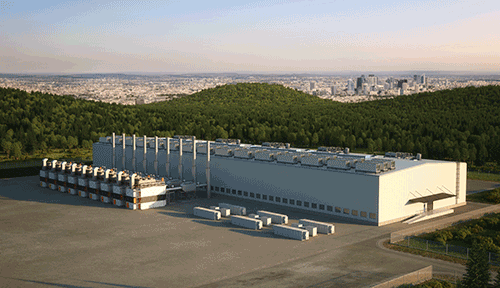
Energy storage can save significant costs by improving the flexibility and reliability of your engine plant
There is a smart solution for improving plant flexibility and reliability for those willing to give it a shot — an Energy Storage System (ESS). As a result, you can run your engine plant more optimally and save fuel, running hours and maintenance costs. In this blog we’ll talk about why we think investing in energy storage is a no-brainer.
In a perfect world you would run your power plant as efficiently as possible, with optimal production costs and wasting as little fuel and other consumables as possible. In reality, balancing plant production with energy demand is no easy task.
There is much to be gained for those willing to invest in energy storage, both in terms of cost optimisation and technical advantages. With an ESS, you will not only save on fuel, lube oil and maintenance but also gain better load step and ramping capabilities for your engines as well as improved power quality through load and frequency management. Lower fuel consumption will also result in savings in emissions.
Why more power plant owners should consider adding energy storage
Adding an ESS is still an underutilised way to increase the flexibility and reliability of plant operations. We think more companies should consider the option as storage technology can offer benefits for plants of all ages with a variety of engine types. The addition of energy storage is beneficial for all plants, particularly those tied to industrial operations, mining, or islanded grids, where the need for off-grid energy flexibility and reliability is especially high.

A true story about energy storage, ideal engine loads and optimal costs
Let’s say you have a power plant that grapples with unstable load patterns and sudden spikes in power demand. To ensure you have enough reserves to balance the fluctuating load, you might run your engines on, say, a 28% load instead of the optimal 95% or so. As a result, you’re not running your engines at an ideal load level and have to deal with the consequences — higher fuel consumption and costs.
What we just described is a true story — a customer of ours with a plant running on part load operations is a prime subject for optimisation with the help of an ESS. With energy storage, they would be able to reduce the spinning reserve of the plant by over 50% and operate the remaining running engines in the most efficient way, thanks to increased load. This would help them to not only ramp up the engines quickly when the need arises, but also to optimise costs in the long haul, thanks to lower maintenance costs. After all, you don’t need to maintain what you don’t run.
Reduce spinning reserve with added energy storage for optimal engine load
By adding storage you’d be able to remove spinning reserve and increase engine load and still be able to cope e.g. with load peaks. The added storage acts as a backup and replaces the spinning reserve that would otherwise need to be provided by the engines. This way engines can run at optimal values.
Removing spinning reserve and increasing load also generates savings. For example, you could be running a certain number of your engines at ideal load instead of running all of them ineffectively — like in one of our case studies. We calculated savings for a scenario in which the same engines were run with the ESS and without it. With the fuel price at 4,0 USD/MMBtu, the annual operational savings were a whopping 2,6 million USD annually, thanks to the ESS.
Software has superhuman reaction times — make them work to your advantage
We can probably all agree that you can make better decisions based on data than on rules of thumb. Despite this, most of the decision-making at power plants is still done by humans: They decide when and how to balance the plant production with energy demand and when to shut down an engine or start it back up.
And we admit, sometimes it still makes sense. For instance, you could get a call from the factory, saying they’re going to start-up a big piece of machinery that will spike the energy demand. However, these types of situations are increasingly becoming the exception rather the rule.
Our energy storage solution has a built-in energy management system, GEMS. It’s a sophisticated software platform that controls and regulates the entire system and can decide when to charge the batteries and when to discharge them. GEMS reacts to sudden changes in power demand in milliseconds rather than minutes, as would be the case with human counterparts. With the increased automation this type of software offers, a single operator would be able to handle a larger number of engines with ease — or the same engines more efficiently — making the energy management system very beneficial to plants and the people running them.
Watch this video to learn more about GEMS
Investing in energy storage is a path to long-term cost optimisation
We’re sure it comes as no surprise, but there's a CAPEX investment involved when installing the ESS. However, in most cases the payback time is attractive — approximately two to three years, depending on fuel cost and the operational profile of the plant.
Investments in plant flexibility and efficiency will undoubtedly give you an edge. To ensure your path is as smooth as possible, we’d suggest teaming up with an experienced and trustworthy partner — like us. While energy storage is a relatively new technology with some perceived risks, our extensive experience designing, deploying, integrating, and optimising this technology across the world ensures you will have a reliable partner to maximise profits and future-proof your energy portfolio. Why not optimise your assets today?


Writers Malin Östman, Vice President (Strategy & Business Development) and Simon Widd, Business Development Manager are both experts at Wärtsilä Energy Business. Malin has worked with concept development for Hybrid and Energy Storage applications. Simon focuses on supporting our customers to succeed during the power plant lifecycle.
